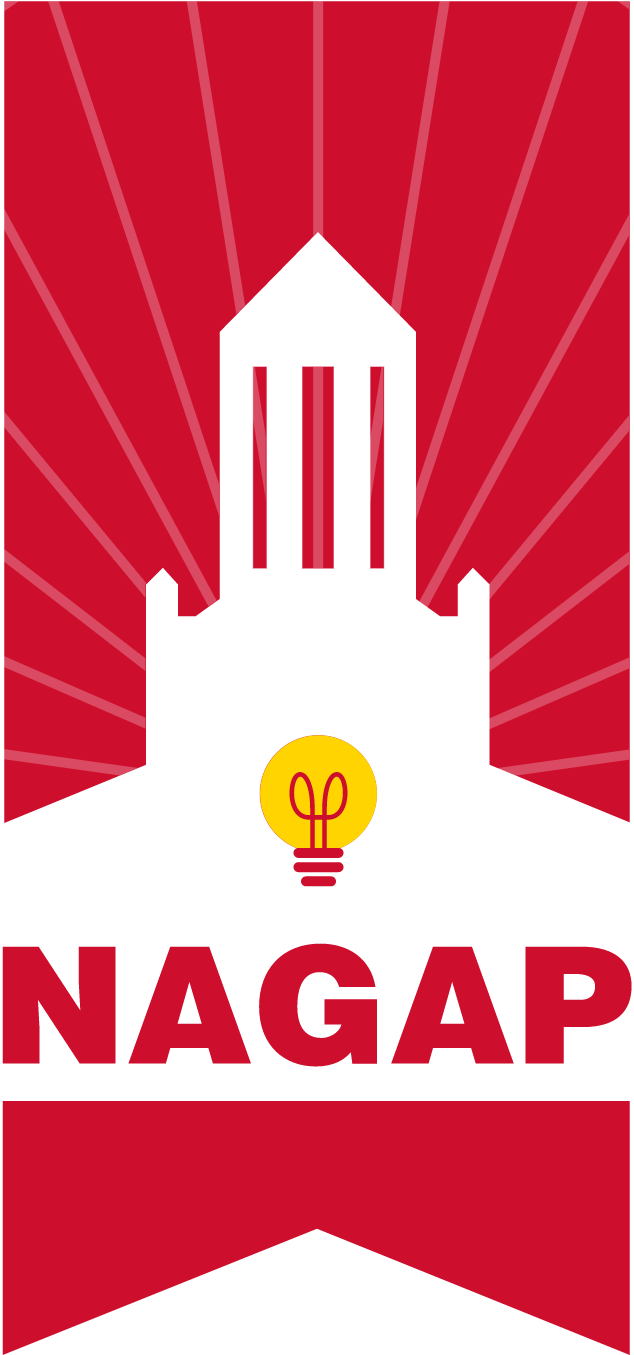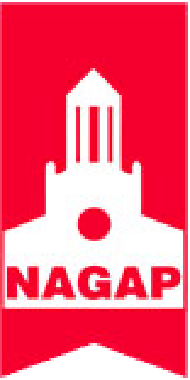Joseph H. Paris, Delaware Valley University, NAGAP Research Committee Chair
Nick Dix, University of Northern Colorado, NAGAP Research Committee Member
NAGAP members have access to the Graduate Enrollment Management Compensation Analytics Tool (GEMCAT) a searchable database and interpretive tool with 13 interactive dashboards designed to help members improve their wage analysis and advocate for the resources needed to support graduate enrollment management (GEM) success at their institution. The tool includes data collected from NAGAP members in 2019, 2021, and 2023, providing users with insight into how GEM professionals’ salaries, job duties, job titles, and work modalities have changed over time.
Benefits of the NAGAP GEMCAT
By providing access to a searchable database of compensation data, GEMCAT allows users to benchmark their own salaries and benefits against industry standards. This helps ensure fair and competitive compensation, leading to higher employee retention and satisfaction. The tool’s interpretive features empower professionals to make data-driven cases for additional resources. By identifying compensation trends, members can advocate for appropriate budget allocations to attract and retain top talent, thereby enhancing overall institutional success in graduate enrollment management.
Access to comprehensive data enables institutions to make informed decisions regarding hiring, salary structures, and long-term planning. This helps align compensation strategies with institutional goals, ensuring that resources are effectively allocated to support growth and sustainability in graduate programs. Users can tailor searches based on institution size, geographic region, and other variables, making the tool a flexible resource for diverse professional needs. This customization allows for a more nuanced understanding of compensation trends in specific contexts and across time.
Building a Stronger Case with Compensation Analytics: Negotiation Best Practices for GEM Professionals
In today’s competitive higher education landscape, GEM professionals play a critical role in supporting the success of graduate programs. However, advocating for the resources and compensation necessary to perform their roles effectively can be challenging. A compensation analytics tool, which provides access to detailed salary and benefits data, equips GEM professionals with the insights needed to build a stronger case for fair and equitable compensation. Members can use the GEMCAT data as social comparison information which research suggests produces higher confidence levels for resource negotiation (Bear et al., 2023). Whether negotiating salary adjustments or requesting additional resources, compensation analysis tools provide professionals with information necessary for determining what their peers are compensated thereby helping professionals align their needs and expectations with industry standards. Below are some useful tips for leveraging compensation analytics data in resource advocacy and compensation negotiations.
Benchmark Against Industry Standards
One of the most powerful features of a compensation analytics tool is the ability to benchmark your salary, benefits, and job responsibilities against those of your peers in similar institutions (Bear et al., 2023). This tool allows you to compare your compensation with industry standards, ensuring you have a clear understanding of how your current compensation stacks up. By identifying discrepancies between your pay and the market average, you can present a strong, data-backed case for salary adjustments. Emphasizing that your compensation is below industry norms positions your request as a correction, rather than an ask for a raise, making it a more compelling argument.
Leverage Regional and Institutional Context
Compensation varies significantly depending on geographic region, institution size, and mission. When advocating for a salary increase or additional resources, it’s crucial to contextualize your data to align with your specific situation. The analytics tool allows you to filter data based on factors like institutional type and region, helping you tailor your requests. For instance, institutions in higher cost-of-living areas often require higher salaries to maintain parity, so using local data strengthens your justification. Additionally, showing that your institution lags behind regional peers can provide a compelling reason for adjustments to both salary and resource allocation.
Identify Compensation Trends
A key feature of compensation analytics is the ability to track trends over time. By identifying upward trends in salaries and benefits within your field, you can demonstrate that compensation for similar roles is steadily increasing. If your salary has remained stagnant, showing that peer institutions have raised pay for similar roles provides a strong basis for your request. Furthermore, trends can reveal broader shifts in the market, such as the growing demand for skilled GEM professionals or the increasing complexity of these roles, both of which can help justify resource requests and salary negotiations.
Show the Link Between Compensation and Performance
Data-backed evidence can also help you illustrate the relationship between competitive compensation and performance outcomes. Research has shown that fair and competitive compensation correlates with higher employee retention, increased job satisfaction, and improved performance. By demonstrating that investing in staff compensation can reduce turnover and foster a more productive, motivated workforce, you can make a compelling case for additional resources. Additionally, linking your compensation request to broader institutional outcomes, such as exceeding enrollment targets or enhancing student services, strengthens your position by aligning your goals with those of the institution.
Use Customizable Reports for Impact
One of the most powerful aspects of a compensation analytics tool is its ability to generate customized reports. Tailoring these reports to match your specific job responsibilities, institution type, and region can make a significant difference in the impact of your request. For example, if your role has expanded to include additional responsibilities, such as managing new recruitment initiatives or overseeing financial aid processes, you can use the data to show how your compensation does not reflect the scope of your work. Customized reports allow you to present a nuanced, targeted argument that is more likely to resonate with decision-makers.
Negotiate with a Long-Term View
When negotiating compensation, it’s important to take a long-term view rather than focusing solely on immediate salary increases. The compensation analytics tool allows you to identify salary growth trends over time, which you can use to advocate for a structured, multi-year compensation plan. Showing that similar institutions have implemented long-term salary strategies can provide a model for your own institution to follow. Additionally, it’s worth considering not just salary, but the full compensation package, including benefits, professional development opportunities, and retirement plans. Using the tool to compare these factors with peer institutions can strengthen your overall negotiation strategy.
Frame Requests Around Institutional Success
In addition to making a personal case, framing your compensation or resource request within the context of broader institutional success can be highly effective. Demonstrating how competitive salaries and adequate resources directly support the institution’s goals—such as increasing enrollment, enhancing student support, or improving program diversity—makes your request more strategic. Compensation analytics data can help show that investing in staff, particularly in graduate enrollment management, leads to better outcomes for students and the institution. By aligning your request with the institution’s mission and long-term objectives, you position yourself as a critical asset in achieving these goals.
Present Data Visually
Data visualization can make a significant impact when presenting compensation data to decision-makers. The compensation analytics tool includes features that allow you to use charts, graphs, and other visuals that clearly display salary discrepancies, trends, and regional comparisons. These visuals can make complex data more accessible, helping your audience quickly grasp the key points. A well-designed chart showing how your compensation compares to industry standards, for example, can be much more persuasive than a simple narrative explanation. Visual data also allows you to present the information in a clear, objective manner, making your case more compelling.
Highlight Unique Expertise and Responsibilities
Lastly, when advocating for increased compensation, it’s important to highlight any unique expertise or additional responsibilities you’ve taken on that extend beyond the typical scope of your role. The compensation analytics tool allows you to compare your specific job duties with those of peers in similar positions, helping you quantify the value you bring to your institution. If you have specialized skills—such as managing international student recruitment, overseeing complex enrollment systems, or leading student diversity initiatives—you can use the tool to show that these additional responsibilities warrant higher compensation or additional resources. This approach not only highlights your individual contributions but also underscores the strategic value you bring to the institution.
By using the data provided by a compensation analytics tool effectively, GEM professionals can make a compelling, evidence-based case for the resources and compensation they need. These tools not only provide critical insights into salary trends but also help align individual requests with broader institutional goals, making them an invaluable asset in negotiations.
Conclusion and Next Steps
Negotiating compensation is a highly personal endeavor. Personalized work arrangements are common in the contemporary higher education workplace, particularly with the emergence of “i-deals”—customized agreements negotiated directly between employees and their managers (Marescaux et al., 2019). Such agreements may be necessary when institutions lack the financial resources to ensure parity across pay scales. Consider framing your negotiation in such a way that addresses potential negative outcomes that may stem from i-deals being viewed from a deficit perspective. When one employee is compensated or provided with special work accommodations, colleagues may view this negatively (Marescaux et al., 2019). Have a plan for expanding your i-deal into an organizational norm that expands opportunities to your colleagues.
Beyond GEMCAT data, gather additional data and insights into peer institutions and the results produced from counterpart positions or the position you intend to enter. Consider conducting an informational interview with colleagues at other institutions, particularly to understand the extent to which institutional context, resources, structures, expectations are comparable or different to those at your institution. Ask colleagues about their career trajectories and the history of their positions at their institutions. Doing so will lay the groundwork for expansion of opportunities through quantifiable expectations, rooted in the data produced by your research.
References
Bear, J. B., Pinkley, R., Barsness, Z., Mazei, J., Bhatia, N., & Sleesman, D. J. (2023). Gender, pay transparency, and competitiveness: Why salary information sometimes, but not always, mitigates gender gaps in salary negotiations. Group Decision and Negotiation, 32(5), 1143-1163. https://doi.org/10.1007/s10726-023-09837-x
Marescaux, E., De Winne, S., & Rofcanin, Y. (2021). Co-worker reactions to i-deals through the lens of social comparison: The role of fairness and emotions. Human Relations, 74(3), 329-353. https://doi.org/10.1177/00187267198841
About Joseph H. Paris




